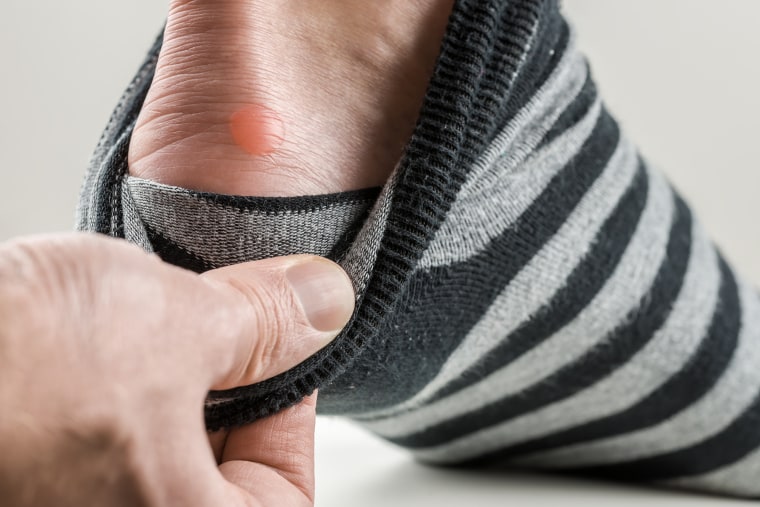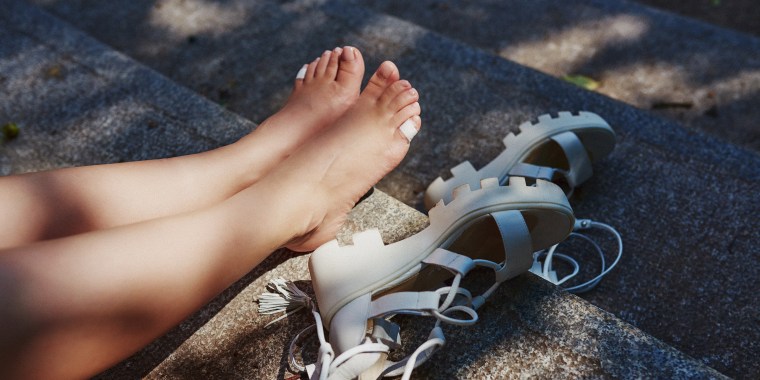Blisters are small, painful sacs of fluid that appear on your skin. Different factors can bring on blisters. You’ve probably developed a blister from a shoe rubbing against your skin — that’s one common cause. Heat and skin diseases can also cause blisters.
You could also experience blistering from sunburn, or fever blisters on the lip or near your mouth — those blisters are commonly called cold sores.
Symptoms of blisters
If you develop a blister, you’ll notice a small area on your skin with fluid underneath it. Blisters are usually painful. Friction or repetitive work like gardening might cause a single blister, while sunburns or diseases could trigger multiple blisters.
Causes of blisters
According to the National Library of Medicine (NLM), there are a number of different things that can cause blisters.
You might develop blisters from:
- Burns or sunburn
- Frostbite
- Eczema
- Allergic reactions
- Poison ivy, oak or sumac
- Diseases or infections
- The viruses that cause chicken pox or cold sores
If blisters appear on your skin and you don’t know why — for example, you can’t point to irritation from rubbing, a cold sore or a blistering sunburn — you’ll want to see a dermatologist. These blisters could be signs of certain rare but dangerous conditions, according to Dr. Jenny Murase, associate clinical professor of dermatology at the University of California, San Francisco, and a member of the American Academy of Dermatology.
Diagnosing blisters
Most of the time, you’ll be able to spot and treat blisters on your own. The NLM says there are certain circumstances when you should seek medical care for blisters.
Seek medical care for blisters when:
- They are draining pus
- The skin around them is red, swollen, warm or painful
- You also have a fever
- You don’t know what’s causing them
- You have diabetes or circulatory problems
Your doctor can evaluate your blisters and symptoms to determine what’s causing them and the best course of treatment.

Treatment for blisters
If you do develop blisters, they will likely heal on their own in a week or two, according to the American Academy of Dermatology (AAD). Try to leave them alone. “The best Band-Aid for the skin is the skin,” Murase said. “We usually do not recommend removing the skin of the blister.”
She says it’s the pressure of the blister that’s causing the pain, so if you need to, you can drain the blister. Put the tip of a needle in a flame or dip it in rubbing alcohol to disinfect it — it’s teeming with bacteria, and you don’t want to spread that bacteria to the blister site. Then pierce the blister with the needle so it can drain. “The skin is still there. That allows it to heal in the best way possible,” Murase said.
You can cover a blister with an adhesive bandage if you want to protect it. The AAD suggests pulling the sides of the bandage in toward the blister a little to raise the bandage and reduce pressure on the blister.
You can prevent a lot of blisters by:
- Using sunscreen to prevent blistering from sunburn
- Treating cold sores as soon as you feel them coming on to prevent blisters on the lips or blisters in the mouth
- Protecting your skin from blisters caused by friction or rubbing
“Blisters on the feet are incredibly common, especially when it’s hot out and people wear shoes without socks,” said Dr. Melissa Piliang, a dermatologist at the Cleveland Clinic and a member of the American Academy of Dermatology. “If you can plan ahead a little bit, that’s helpful.” She adds that darker skin is more likely to heal with darker areas where a blister was, but treating the condition early can help minimize that.
You can apply waxes or silicone-based products to spots that are prone to blisters to help reduce friction. Look for them in running stores or online.
“In a pinch you could use lip balm or lip ointment,” Piliang said. “It’s not going to save you from a bad pair of shoes, but it really can help.”


